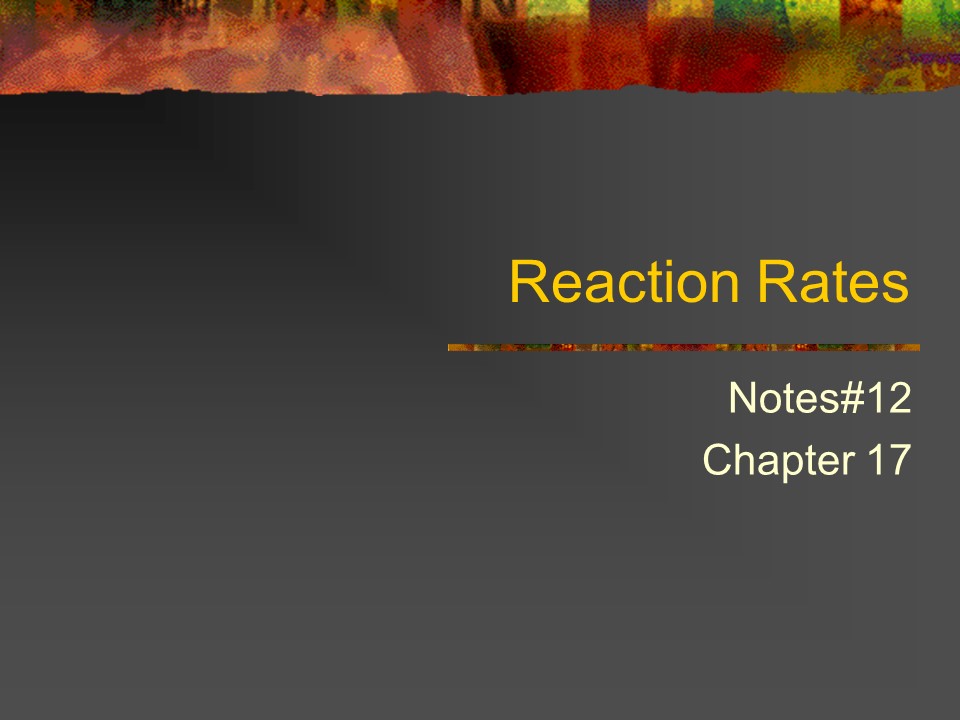Reaction Rates - PowerPoint PPT Presentation
Title:
Reaction Rates
Description:
Reaction Rates Notes#12 Chapter 17 Reaction Processes & Rates Reactions are written in simplified forms-showing reactants turning into products reactants products ... – PowerPoint PPT presentation
Number of Views:220
Avg rating:3.0/5.0
Title: Reaction Rates
1
Reaction Rates
- Notes12
- Chapter 17
2
Reaction Processes Rates
- Reactions are written in simplified forms-showing
reactants turning into products - reactants ? products
- Real reactions are more complex
- Elevated energy states, and temporary substances
(activated complex) are the rule - Some reactions ? more complex? several distinct
steps
3
Reaction Rates
- Chemical reaction rates vary widely
- Some reactions are completed within a few
milliseconds - Others require thousands of years
- Most Reactions start off relatively rapidly, slow
steadily, and become very slow as they approach
completion - Some reactions simply stop at completion. Others
level out at an equilibrium with their reverse
reactions (forward reverse rates equal)
4
Reaction rate
- Average rate at which reactants produce products
- CO(g) NO2(g) ? CO2(g) NO(g)
- Reaction rate ?quantity
- ?time
Time (s) NO (M)
0.00s 0.00
2.00s .010
5
Pg. 531
- Practice problems 1,3
6
Collision Theory
- Explains chemical reactions in terms of effective
collisions between particles. - -sufficient energy
- -favorable orientation
- Conditions that favor effective collisions, favor
reactions. - Increasing Temperature ( pressure) increase the
frequency energy of collisions favoring most
reactions
7
Activation Energy, Activated Complexes
- Most physical chemical changes require an input
of energy to breakdown older structures - Bonds within reactants are broken down with a
specific amount of energy called Activation
Energy . - Activation energy is amount of energy to
activate the reaction, get it going - energized, broken down reactants ? temporary
activated complexes ? products
8
Activated Complexes
- ReactantsEnergy?Activated complex
- Internal Energy Peaks in this complex, then
starts to drop as more stable products begin
forming. - Activated Complex ? Products Energy
- Draw 2 graphs
9
Reaction Rates (5 factors affecting rates)
- 1. Substances involved Reaction Type Ions in
solution react very fast Most metals corrode
slowly - 2. Temperature Kinetic Energyhigher temp.
speeds up most reactions - 3. Concentration reactions go faster at higher
concentrations (more effective collisions)
10
Reaction Rates (5 factors affecting
rates)Continued
- 4. Contact Area (surface area, mixing)fine
powder, versus large pellets into liquid - 5. Catalysts-substances that promote or speed up
reactions without themselves being consumed.
Catalysts lower activation energy. Enzymes are a
type of catalyst































